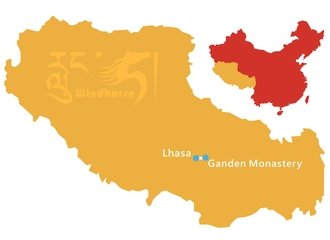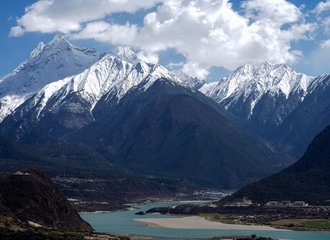Does the train to Tibet reduce the risk of high altitude sickness?
Traveling to Tibet is an experience unlike any other, a journey to the "Roof of the World" where one can encounter spellbinding landscapes, an ancient culture, and an opportunity to touch the clouds. However, the high altitude of Tibet presents a unique challenge: the risk of altitude sickness. Many wonder if taking the train to Tibet, a popular mode of transportation for visitors, can reduce this risk. Let's explore this query in detail.
High Altitude Sickness, or Acute Mountain Sickness (AMS), occurs when people ascend to high altitudes rapidly, causing the body to struggle in adjusting to the decreased amount of oxygen available. Symptoms can range from mild, like headaches, nausea, and fatigue, to severe ones such as shortness of breath, confusion, and chest pain.
The Qinghai-Tibet Railway, popularly known as the Tibet Train, is a marvel of engineering. It’s the highest railway in the world, traversing through some of the most challenging terrains, and reaches altitudes of over 5,000 meters (16,404 feet) at its peak. A question frequently posed is whether this train journey, given its unique features, offers a safeguard against the risk of altitude sickness.
The Pressurized Environment
One of the groundbreaking features of the Tibet Train is its pressurized carriages. Much like the cabin of an airplane, these carriages simulate the conditions of a lower altitude. This design aims to provide passengers with a comfortable journey, reducing the immediate risk of altitude sickness during transit. The pressurized environment ensures that travelers are exposed to an oxygen level akin to what they would experience at significantly lower elevations, thereby mitigating the physiological stress of high altitude during the journey.
Oxygen Availability
In addition to the pressurized cabins, the train is equipped with a centralized oxygen supply system. Oxygen outlets are available in the cabins, ensuring that passengers can access supplemental oxygen if they begin to feel unwell. This safety measure is particularly valuable for those who might be more sensitive to altitude changes or those with certain pre-existing medical conditions.
Arrival in Lhasa
While the train provides a buffered environment, the real test of acclimatization begins upon arriving in Lhasa. Lhasa, the capital of Tibet, sits at an elevation of about 3,650 meters (11,975 feet). Once off the train, visitors are exposed to this altitude in full. As a result, many may start to experience the effects of altitude sickness, given the significant jump from the conditions inside the train.
Acclimatization in Lhasa
The best approach to mitigating the risk of AMS is gradual acclimatization. This involves allowing the body time to adapt to the decreased oxygen levels. Given the immediate change in altitude upon arrival, it is strongly advised for visitors to spend 2 to 3 days in Lhasa city. During this time, one should engage in light activities, consume plenty of water, and avoid alcohol or heavy exertion. This acclimatization period provides the body a buffer, reducing the risk of severe altitude sickness and preparing it for further exploration of Tibet's higher altitudes.
In conclusion, while the Tibet Train does offer protective measures against the onset of altitude sickness during the journey, it's not a panacea. The real challenge begins once one steps out in Lhasa. Being informed and prepared is crucial. Visitors should factor in a buffer period in Lhasa to allow their bodies to adjust, ensuring a safer and more enjoyable Tibetan adventure. It's always a balance between marveling at the majestic beauty of Tibet and ensuring one's health and well-being. With the right precautions, one can achieve both.
More information about the high altitude sickness.














